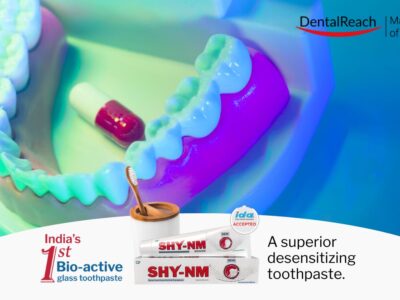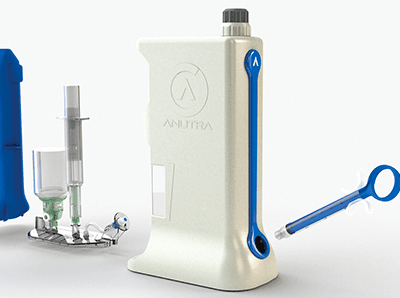(This article is part 2 of the 2-part series on postoperative pain relief in dentistry)
Abstract
Pain is one of the main problems in the early postoperative period. As seen in Part 1, it is treated in modern outpatient practice with non-narcotic analgesics which, in addition to the analgesic effect, have antipyretic, anti-inflammatory and desensitizing properties. This part discusses how to prescribe which NSAID and when, along with their interactions with other systemic drugs.
(It is suggested to read Part 1 of this article series which describes the names, types, mechanisms, pharmacokinetics, pharmacodynamics and side effects of NSAIDs.)

Rational administration and dosage of NSAIDs
Before prescribing an NSAID to a patient, it is necessary to decide whether this drug is really indicated for him. Taking into account modern standards of pharmacotherapy of an existing disease, it is necessary to develop a treatment program with minimally effective doses in the shortest possible time.
- As a rule, in acute cases, the beginning of treatment (first hours, days) with high doses with a quick transition to maintenance is more effective and safe than uncontrolled long-term use.
- NSAIDs are unequal in their damaging effect on the stomach and intestines, liver, kidneys and blood cells, which should be taken into account when planning therapy, especially long-term therapy, and if necessary, the use of these drugs in patients with pathology of the above organs, elderly and senile age.
- Each patient has his/her own NSAID drug(s) with the best efficacy and safety profile. It is impossible to predict the patient's response to a particular drug. The ineffectiveness of one of the drugs does not mean the ineffectiveness of the subgroup as a whole. To determine the optimal drug in case of need for long-term treatment, it is possible to use sequential trial treatment with various NSAIDs with a comparative assessment of its results.
- When evaluating the effectiveness, it must be taken into account that an analgesic effect is noted first (after hours of administration), and the manifestation of the actual anti-inflammatory effect is observed later, its evaluation should be carried out no earlier than after 2 weeks of regular use (oxicam – after 4 weeks).
As a rule, NSAIDs are used after meals, in a sitting position, drinking 150-250 ml of boiled water at room temperature.
The time of taking the drug should be associated with the part of the day when the symptoms of the disease are most pronounced. By this time, the peak action of the drug should be observed. Under this condition, it is not necessary to ensure the action of the drug throughout the day, an "asymmetric" intake of 1-2 times a day is possible.
- The simultaneous use of two or more NSAIDs is impractical due to the lack of evidence of the rationality of such combinations, the presence of data on the competition of various NSAIDs for binding to blood proteins, which may increase the risk of side effects. An exception is possible with a combination of fast- and short-acting dosage form at different times of the day.
‘Effective’ Order – How to prescribe?
When prescribing to patients, it is important to know what effect is most desired – anti-inflammatory or analgesic. Then, you can prescribe according to the severity of the condition.
According to the anti-inflammatory effect of medium doses, NSAIDs can be arranged in the following order (maximum to minimum):
- Indomethacin
- Flurbiprofen
- Diclofenac sodium
- Piroxicam
- Ketoprofen
- Naproxen
- Ibuprofen
- Amidopirin
- Aspirin
According to the analgesic effect of medium doses, NSAIDs can be arranged in the following order (maximum to minimum):
- Ketorolac
- Ketoprofen
- Diclofenac sodium
- Indomethacin
- Flurbiprofen
- Amidopirin
- Piroxicam
- Naproxen
- Ibuprofen
- Aspirin
Comparative characteristics of the analgesic effect of NSAIDs
Using aspirin as an example (Reference -Drugs of Choice from the Medical Letter, 1995)


The best NSAID analgesic for dentists
The optimal analgesic in the postoperative period is ketorolac, the analgesic activity of which is comparable to 12 mg of morphine.
- The maximum effect develops within 2-3 hours.
- The effect of inhibition of platelet aggregation ceases after 24-48 hours.
- Bioavailability in adults is 100% regardless of the route of administration.
- No carcinogenic effect and mutagenicity has been observed, it does not affect fertility. Strengthening and increasing the duration of pain relief is possible when the drug is combined with first-generation antihistamines that have a sedative effect.
Recommended oral combinations on the first day (no more than 5 days):
- Ketorolac 10-20 mg and diphenhydramine 100 mg – 2 times;
- Ketorolac 10-20 mg and suprastin 25 mg – 3 times;
- Ketorolac 10-20 mg and tavegil 1 mg – 2-3 times;
- Ketorolac 10-20 mg and Peritol 4 mg – 2-3 times.
In the next day – 1-2 times, depending on the intensity of the pain syndrome, but not more than 5 days.
Drug interactions
Quite often, patients who receive NSAIDs are prescribed other drugs. In this case, it is necessary to take into account the possibility of their interaction with each other.
- NSAIDs can enhance the effect of indirect anticoagulants and oral hypoglycemic agents. (Anticoagulants after surgery in outpatient dentistry are usually not prescribed, but you should ask the patient if he is on chronic use of such drugs due to somatic diseases.)
- At the same time, they weaken the effect of antihypertensive drugs, increase the toxicity of aminoglycoside antibiotics, digoxin and some other drugs, which is of significant clinical importance and entails a number of practical recommendations.
- If possible, the simultaneous appointment of NSAIDs and diuretics should be avoided, due to the weakening of the diuretic effect and the risk of developing renal failure.
- The most dangerous is the combination of indomethacin with triamterene.
Many drugs prescribed simultaneously with NSAIDs, in turn, can affect their pharmacokinetics and pharmacodynamics:
- Aluminum-containing antacids (almagel, maalox and others) and cholestyramine weaken the absorption of NSAIDs in the gastrointestinal tract. Therefore, the concomitant administration of such antacids may require an increase in the dose of NSAIDs, and intervals of at least 4 hours are necessary between taking cholestyramine and NSAIDs;
- Sodium bicarbonate enhances the absorption of NSAIDs in the GI tract;
- The anti-inflammatory effect of NSAIDs is enhanced by glucocorticoids and "slow-acting" (basic) anti-inflammatory drugs (gold preparations, aminoquinolines);
- The analgesic effect of NSAIDs is enhanced by narcotic analgesics, sedatives and antihistamines.
The effect of NSAIDs on the effect of other drugs
(Reference – Brooks PM, Day RO, 1991, with additions)
Pharmacokinetic interactions:


Pharmacodynamic interactions:

High-risk combinations:

Planned control of the safety of NSAIDs
This ends the exhaustive knowledge to keep in mind about NSAIDs! But what's important is that though extremely effective, planning their safe use entails two factors-
- Informing patients about possible side effects and necessary actions in case of suspicion of their development and
- systematic control of health conditions in medically compromised individuals.


















Comments